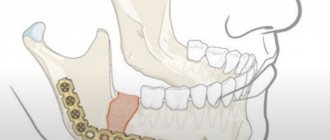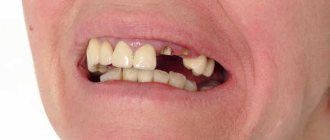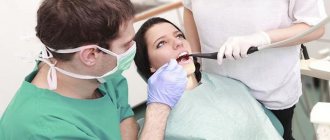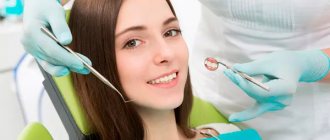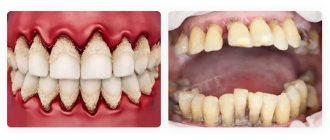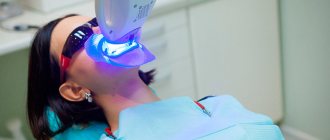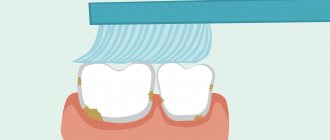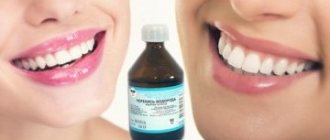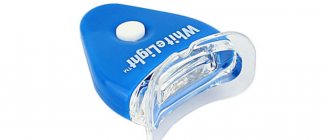Teeth have physiological activity that is not noticeable to a non-specialist. Teeth movement occurs due to the fact that the tooth is not tightly fixed into the bone alveolus, but has a shock-absorbing fastening system in the form of periodontal tissue. That is why the chewing load is evenly distributed over the surface, and the teeth maintain their integrity. However, tooth mobility sometimes becomes pathological. Most often, if parents did not make obvious mistakes in childhood, this phenomenon occurs in people of mature or middle age. Movements that are very difficult to visually record are considered normal for tooth mobility. When mobility becomes noticeable even to the owner of the teeth, then we are talking about a disease.
Did you know that all dental pathologies can be cured with aligners?
I want to know more about the movement of teeth on aligners
A classification of this pathological process of tooth movement has been created:
- During the first stage,
the teeth move back and forth or, in medical terms, have vestibulo-orally directed mobility. - When, in addition to this, the teeth make movements in lateral directions, the second stage
. - At the most dangerous stage, the third stage
, vertical and circular movements are added to those mentioned earlier. The teeth are already beginning to emerge from the bone alveoli.
If the first two stages are subject to treatment and have a certain chance of recovery, then the last stage of mobility is a kind of sentence - the tooth should be removed.
Content:
- When it's all about physiology
- Why is there a problem?
- How much can root units become loose?
- Treatment
If, when pressing on a canine, incisor or molar, it begins to become very loose, you should urgently consult a doctor. The doctor will conduct a simple diagnosis and explain what’s going on. Refusal of dental treatment for pathological tooth mobility is a step towards a toothless smile.
What is the cause of pathological mobility of teeth?
The well-known disease periodontitis is the main cause of this problem. This disease is inflammatory in nature and is characterized by destruction and reduction of tissue adjacent to the tooth. Dental deposits cause inflammation of the gums, which spread to the surrounding bone and ligaments. Inflamed tissue dissolves very quickly and is replaced by granulation tissue. And as a result of the fact that there is no more bone, the teeth acquire pathology in the form of mobility.
How to prevent tooth mobility
The main root cause of a tooth becoming loose is poor hygiene. Therefore, the main prevention of oral diseases is double daily brushing with a paste and brush.
You can reduce the likelihood of this phenomenon by other measures:
- using dental floss to remove bacteria in the interdental space and prevent the development of infection;
- regular, at least once every 6 months, examination by a dentist will allow you to promptly identify problems and solve them at the initial stage, without complications or consequences;
- reducing sweet foods in the diet - due to the high glucose content, sugar provokes the proliferation of bacteria in the mouth, initiates inflammation, starts decay processes, destroys tooth enamel, and slows down restoration processes;
- taking vitamins, eating fresh fruits and vegetables will normalize metabolic and regenerative processes in the body, increase immunity and reduce the likelihood of developing diseases;
- if the cause of loose teeth is bruxism, you should wear a special mouthguard over your teeth at night; it is made of elastic material, does not cause discomfort, and protects dental units from damage;
- rejection of bad habits;
- regular professional cleaning of the oral cavity with ultrasound or laser.
The earlier a dental problem is identified, the more opportunities there are to preserve the integrity of the dentition and avoid removal. Therefore, at the first signs of looseness, as well as bleeding gums, reactions to hot and cold, or pain, you should immediately visit the dentist and conduct a thorough examination. After all, prevention is much simpler and cheaper than prosthetics.
How do teeth move during orthodontic treatment?
A little theory about tooth movement
With the help of connective tissue fibers, the tooth is secured in the dental socket. This ligament is called the priodontal ligament. When the walls of the tooth socket are constantly exposed to the force coming from the aligners to straighten the teeth, areas of tension and pressure appear in the periodontium. Restructuring processes of bone tissue begin to occur in the tooth socket, which trigger bone resorption (resorption) and then its construction (osteogenesis). In the area of pressure, the periodontal fissure contracts, and in the area of tension, expansion occurs. Under pressure, the fibers of the ligament of the tooth and the nerves and blood vessels located in these places are compressed. The surface of the alveoli, located at the root of the tooth, experiences resorption.
In the area of tension, the ligaments of the tooth are stretched, and the process of bone tissue formation occurs. Both of these processes occur simultaneously, but with varying intensity, depending on the stage of treatment. The desired movement can only be achieved by applying a certain force to the jaw and teeth. Empirically, it has been found that less force exerted by aligners to correct a bite results in faster tooth movement. This is explained by the specific processes of regeneration and resorption of dental tissue and alveolar structures. This is why orthodontic tooth movement is a slow process, produced in the desired direction under the influence of small forces. If you make a greater load to move the teeth, the neurovascular bundles will not have time to rebuild in time. Without sufficient innervation and proper blood flow, the position of the tooth is difficult to correct.
Now let's see how teeth move in practice when treating orthodontic pathologies.
Tooth movement in the treatment of dental crowding
How crowded teeth are moved into a straight position using aligners
The clinical director of the Star Smile company, orthodontist Alexander Veniaminovich Spesivtsev, comments on the process of tooth movement:
— Let’s pay attention in the top video to how the upper and lower jaws come into contact with each other at the end of the treatment situation: we see an excellent position, excellent inclination of the front teeth, excellent shape, coincidence of all midlines, all linear parameters. Which, in general, allows us to think that the patient as a whole should be satisfied with this result.
The most important thing - as you have already noticed by watching the video - is that one of the key points of the aligner treatment technology is the creation of a 3D virtual setup
. That is, you and I sit in front of the computer and see WHAT will happen as a result of treatment BEFORE it starts. This emphasis is made on purpose, since many of us find it difficult to understand in principle how teeth move.
This kind of technology, this kind of 3D image, provides the answers. Therefore, look, analyze and begin your orthodontic journey in correcting your not very straight teeth!
Tooth movement during crossbite treatment
This patient has a crossbite. We see not a very narrow, but on the contrary, a very wide skirt-like shape of the upper central incisors. In aligner technology, we very often use a variety of different ways to adjust the size of teeth in order to create room for alignment. Therefore, here, as they say, “your hands are itching” to intervene in the situation and a little - let’s say - “file” the teeth on the sides to make them more attractive. And thereby create the optimal place for leveling.
A 3D virtual setup shows how straight his teeth will become with a crossbite
Quite classic tasks are faced by every doctor who shows a 3D virtual setup to a patient. The setup shows how the position of the teeth changes, how the shape changes slightly. On the lower jaw and on the upper jaw on the left we see the not entirely correct position of the last two teeth, two molars: the upper one tilts very strongly towards the buccal side, and the lower one, on the contrary, tilts towards the tongue. This is a crossbite. The video shows the movement of all teeth to their normal position.
Why does a violation occur?
Teeth begin to loosen for various reasons. The most common of them:
- Failure to comply with oral hygiene rules. If a person does not clean dental crowns well, a soft plaque is deposited on their surface. Gradually it turns into deposits of hard stone, extending along the roots deep under the gums. Then an inflammatory process develops. The soft tissues swell, turn red, and the ligamentous apparatus slowly collapses. A person may notice that his gums often bleed, and individual teeth become more loose than usual.
- Refusal to undergo annual professional hygiene procedures. This reason is also associated with the accumulation of tartar. It is very important to get rid of it once a year using a professional ultrasonic scaler.
- Bite distortions. It happens that crooked units exert strong pressure on their neighbors. Hence the weakening of the latter.
- Endocrine diseases. Many endocrine pathologies lead to deterioration of blood supply to periodontal tissues. A smaller amount of essential nutrients and oxygen reaches the tooth roots. As a result, they begin to stay in the holes worse.
- It is very important that artificial units do not interfere with natural ones and do not put pressure on them. They must match the dentition in both shape and size.
Poor installation of prostheses/implants.
- Congenital disorders in the structure of the dental system. It happens that mobility occurs due to the frenulum of the lips/tongue being too short. Then the ligamentous apparatus of the oral cavity does not function correctly.
- Periodontal inflammation , as well as other non-inflammatory diseases of periodontal tissues. With periodontal disease, periodontitis, units quickly become loose. The functioning of the ligamentous apparatus is greatly deteriorated.
- Destruction of alveolar processes. Not a very common cause of mobility, but still sometimes dentists encounter it. Atrophy is a consequence of inflammatory processes and traumatic injuries to the gums.
What mobility treatment involves depends on the underlying cause of the abnormal condition. Therefore, before drawing up a correction scheme, the doctor must carry out diagnostic procedures.
Did you know that all dental pathologies can be cured with aligners?
Star Smile company is a leading Russian manufacturer of aligners.
The design of each set of aligners for patients is based on accurate mathematical modeling of the physiology of patient tooth movement, taking into account the existing pathology. What does it mean? This means that your teeth will be put in place as quickly and comfortably as possible with the help of Star Smile aligners! Star Smile specialists work in more than 70 (!) cities of Russia. We can always advise you in your city for free. And the main thing is to cure it once and for all with the help of aligners!
How much can root units become loose?
Doctors distinguish several degrees of mobility:
- I. The displacement of the crown in the horizontal direction is no more than one millimeter relative to its neighbors.
- II. Displacement of more than a millimeter. In parallel, slight loosening relative to the vertical axis may be observed.
- III. The unit moves in all directions.
- IV. The crown is very mobile and can even rotate around its own axis.
It is clear that it is easiest to treat a patient with the first degree of mobility. The stronger the loosening, the more serious manipulations the doctor has to carry out in order to keep the dentition intact.
Splinting teeth: price 2021
How much does teeth splinting cost? The price in Moscow for 2021 in economy class clinics will depend on the number of teeth splinted, as well as the technique...
- Fiberglass splinting of 6 front teeth (with the Ribbond system) - about 6,500 rubles.
- Splinting 3 teeth with fiberglass – from 3500 rubles.
- The cost of splinting teeth with crowns (without the cost of preparing teeth): → with metal ceramics - from 6,000 rubles for 1 crown, → with metal-free ceramics - from 19,000 rubles for 1 crown.
- The cost of a splinting clasp prosthesis is from 25,000 rubles.
Splinting of mobile teeth with crowns –
In this case, the teeth are first depulped (root canals are filled) and then ground down for crowns.
After that, crowns “soldered” to each other, for example made of metal ceramics, are put on them (Fig. 14). This splinting option has a significantly longer service life and reliability than fiberglass splinting. However, its cost is higher, and significantly. When splinting 6 front lower teeth with crowns, the cost of a structure of 6 units of metal-ceramics will be from 30 thousand rubles (not taking into account the cost of tooth removal). Splinting with all-ceramic crowns (Fig. 15) is another 2-2.5 times more expensive. However, when splinting distant chewing teeth, where aesthetics are not so important, it is possible to make crowns not from metal-ceramics, but from ordinary metal ones.
Recovery period
Recommendations after tooth extraction:
- remove the tampon 15-20 minutes after application, as in the future it becomes a source of infection;
- Do not drink or eat for 2-3 hours;
- for the first 2-3 days, eat only soft and warm food without irritants (pickles, hot spices, marinades, smoked meats);
- Take prescribed antibacterial and anti-inflammatory drugs regularly;
- Carry out rinses and baths only in consultation with your doctor;
- limit physical activity and nervous stress.
With simple removal (without opening the gums), complete recovery occurs within a week; for complex cases, it takes 10-14 days.
Splinting teeth with clasp dentures –
If you look closely at Fig. 16-17, you will see that in the area of the inner surface of the lower teeth the prosthesis has an additional thin arch that tightly covers each tooth. This allows the teeth to stand firmly in place and transfer the chewing load from themselves to such a metal arch, without experiencing overload.
The big advantage of such dentures is that they allow you not only to splint mobile teeth, but also to simultaneously restore missing teeth. Read more about this type of prosthesis here .
Basic methods for determining tooth mobility
Traditionally, looseness is assessed based on the subjective sensations of the dentist and the patient. Accurate measurement is possible using special devices, but their use is limited due to the complexity of the technique. To make a diagnosis, an additional x-ray is performed to see periodontal disease or other disorders.
The direction and magnitude of the deviation are checked using tweezers. The tool is applied to the top of the crown and moved in different directions. To see vertical or circular movement, the crown is clamped with tweezers, lifted up or twisted.
What to do if your teeth start to loosen
The main thing in this matter is the speed of seeking help from a dentist. The sooner you make an appointment, the sooner measures will be taken to save your teeth. During the examination, a targeted photograph of the affected tooth (or several teeth, depending on the situation) is often taken. Based on the resulting image, the extent of the lesion is analyzed, as well as the current volume of bone tissue.
Before immediate treatment, the oral cavity must be perfectly clean. In most cases, patients cannot boast of this, so there is a need to clean their teeth from accumulated plaque, various deposits, and tartar. This is a standard procedure that can be performed using a variety of methods. Experts recommend doing this type of cleaning regularly, even if your teeth are in perfect order.
Subsequent treatment will directly depend on the degree of tooth loosening, as well as the source of the problem. If necessary, system diagnostics may be required if the original source has not been found.
